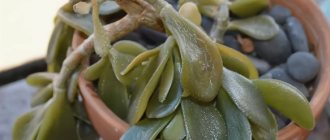Features of culture
This perennial has many names. In botany it is designated as fireweed; more than 60 popular names are known.
- Ivan-tea loves the sun, but does not tolerate prolonged drought and heat. The result of growing fireweed in dry areas is weak and low shoots.
- Fireweed prefers places of former fires.
- Plants dug up in open areas grow better and faster than those brought from the forest.
- Young shoots develop slowly. It gains strength and blooms in an average of 2 years.
- The population is capable of growing for 5-7 years. After this period, sowing will be required in a new place.
Fireweed leaf tea
We figured out how to collect and dry fireweed. How to cook it correctly? The brewing method is not complicated at all. The main thing is that the infusion for brewing is prepared correctly.
To enjoy the exquisite taste of the drink made from fireweed leaves, first of all, you should boil clean water (the bright taste of the drink will depend on this). Then you should rinse the teapot with hot water and put dry fireweed tea (two spoons) into it. After this, the herb is poured with hot boiled water and allowed to brew for about 15 minutes. The drink is then poured into cups and a good time is enjoyed.
The drink will give you a good mood, and its healing properties will strengthen the body. Even cooled tea from the leaves of fireweed leaves a wonderful taste. It is not recommended to add sugar to the drink; it is best to add a spoonful of honey. This product will only enhance the beneficial properties of the drink.
Previously, our ancestors passed down the recipe for making tea from fireweed leaves verbally from family to family. They collected its leaves, dried them, poured boiling water over them in wooden stacks, rolled them between their palms until the juice appeared, or dried their leaves on trays that they placed in a Russian oven.
How to collect
Fireweed seeds are collected after the plants flower. Ivan tea blooms until the end of August, after which 2 months should pass.
The specific fluff is removed from the collected seeds. The seed material is dried and left until next spring, in a cool place protected from light.
If you plan to use the roots, then dig them up in advance (in spring or autumn). It will be easier to work in the fall (in the spring the soil is swollen and difficult to shovel).
It must be remembered that fireweed has a bushy root system (up to 1.5 m). The rhizomes are taken along with a lump of earth (which will ensure better survival rate). Depending on the size, large roots are divided into more convenient fragments (up to 10 cm).
Tips on how to drink fireweed correctly
Already in Ancient China they knew that the tea ceremony was a real art. Drinking tea was always accompanied by heart-to-heart conversations. This made this procedure a pleasant pastime. In addition, tea has a relaxing effect, giving peace and tranquility. It is better to drink it without sweetening it.
If you have a sweet tooth, you can drink the drink as a snack with dried fruits. The healing properties of fireweed after brewing last only a couple of days, so it is better to drink the tea before this time has expired.
- Castor bean: planting, growing, care and maintenance at home and outdoors (115 photos and videos)
- Bergenia - tips for properly growing a medicinal plant. Features of collection, application and contraindications (130 photos and videos of planting in the ground)
- Cloudberries: beneficial properties, features of cultivation and use. Planting, care and propagation with your own hands (150 photos and videos)
Ivan tea is not only useful, but also quite a beautiful flower. Therefore, you can safely allocate a small plot in your dacha for growing it.
How to prepare seeds
Preparation for planting fireweed is carried out in one of three ways:
- seedlings;
- mixed with wet sand;
- on strips of paper.
The last two options help not to lose the material - otherwise it could be scattered by gusts of wind or washed away during rains. The time to plant fireweed seeds depends on the method chosen.
Scheme for growing seedlings:
- you will need a small box;
- a soil mixture is prepared (sand, peat and humus in equal proportions);
- the box is filled with the prepared mixture, shallow grooves are made in the top layer;
- seeds are sown in depressions and moistened with a spray bottle;
- plantings are covered with glass (film) on top, the room temperature is maintained within 18-25 C0.
The first shoots will appear in 4-5 days. After two true leaves bloom on the young plants, picking is carried out. Before planting, the seedlings are hardened off for 3-5 days.
If the seed material will be attached to a paper base: cut strips (2 cm wide) from newspaper or toilet paper. Then, every 7-10 cm, a natural paste is applied (in small drops). The seeds are carefully attached to the prepared adhesive layer.
Reviews
Among the majority of people who prefer to drink tea with their family, fireweed tea is increasingly becoming popular. Its rich taste pleases many, and those who drink this drink avoid illness.
This infusion is not addictive, and, judging by the reviews, it is an excellent help in fighting insomnia.
You can also take tea to nature, a picnic or to work in a thermos. It gives you strength and energy to stay in good shape all day. A decoction of fireweed tea is not considered a medicine, but it enriches the body with useful substances.
The main thing is not to forget about contraindications to the use of tea, then your health will be strong and your body will remain young longer.
Sowing rules
Planting fireweed in open ground is carried out from the end of May to the first half of June.
Regardless of the chosen method, a number of conditions must be met.
The work is carried out in cloudy weather. The area where the population will grow needs to be dug in on all sides with a shovel. This method solves two problems:
- plantings are protected from the penetration of grasses and weeds;
- the culture itself will grow compactly and will not interfere with other garden plants.
You can further limit the growth of the plantation by digging iron sheets (or slate) around the perimeter. If possible, they are deepened to 1 meter.
Then they fertilize the ground with ash. In such conditions, fireweed will grow abundantly and well.
The field can be prepared using a more radical method. However, caution will be required when using fire. A prerequisite is calm, windless weather. First, they dig in the area (the width of the strip is at least 1 m). A fire is made from dry branches. As it burns, you can add peat, moss, and wood waste. The resulting coals are distributed over the area of the site. Then dry straw is poured on top. Slowly smoldering straw forms the necessary ash layer.
Additionally, you can add microbiological fertilizer (this will increase soil fertility).
If seeds are used (mixed with sand or on adhesive tape), then they are sown in rows (which will simplify future weeding). Planting depth – no more than 1 cm.
Planting with roots: holes are prepared (up to 15 cm deep). As with seeds, it is more convenient to plant in rows. Humus, sand and ash are mixed in small quantities, added to the recesses, and watered generously.
Divided or whole rhizomes go deeper into the soil. Watered again.
When young shoots appear, the area is covered with a layer of dry or mown grass (required thickness - 10 cm). Straw prevents moisture evaporation and improves fireweed growth.
Fireweed develops faster from roots than from seeds. A noticeable result will appear within a year.
Properties of fireweed: harm and benefit
Useful properties of fireweed tea
Leaves, shoots, roots and flowers of fireweed are used as medicinal raw materials. The foliage contains ascorbic acid, and it is 3 times more than oranges. They also contain B vitamins, carotene, tannins, pectins, tannins, sugars, macroelements: magnesium, calcium, potassium, microelements copper, iron, manganese and other beneficial substances.
Fireweed has a hemostatic, enveloping, antipyretic, sedative and anti-inflammatory effect. It is considered a powerful natural antioxidant and cleanser. In men, it increases potency. In addition, fireweed tea helps alkalize the blood, relieve anxiety and depression, pain in the head (it also helps with migraines), and accelerates hematopoietic processes. It also prevents the degeneration of prostate adenoma into a malignant tumor, helps normalize blood pressure, strengthen hair roots, slow down the aging of the skin, and at the same time it becomes more elastic and firm.
This tea is used for the prevention and treatment of diseases such as anemia, gastritis, peptic ulcers, colitis, enterocolitis, pancreatitis and disorders of the biliary system, infertility, urolithiasis, bronchitis, sinusitis, pharyngitis, tracheitis, pulmonary tuberculosis, spleen pathologies, dermatological diseases and metabolic-inflammatory skin diseases.
The taste, aroma and color of Koporye tea directly depend on the quality of the water used. This drink is best made with spring or melt water. But how to brew tea correctly? To do this, combine a couple of small spoons of tea with 1-2 tbsp. just boiled water. After 10–15 minutes. the tea will be ready to drink. This tea is quite tasty and chilled. When heating a cold drink, you need to remember that it should not boil under any circumstances, because this will cause its unique smell to disappear. It is recommended to drink this drink without sugar, but you can use honey, raisins, dried apricots, halva or dates.
You can brew similar tea using fresh herbs. Freshly picked foliage must be placed on the bottom of the enamel pan, and the layer thickness should be from 30 to 50 mm. Melt or purified water is poured into it to a height of about 10 centimeters. The mixture should heat over low heat. After the water boils, remove the saucepan from the stove and cover it with a lid. After 10 minutes the drink will be ready.
An infusion and decoction of fireweed rhizomes and leaves also have medicinal properties. This plant is also included in a variety of medicinal herbal preparations.
Useful properties of the herb Ivan tea, contraindications
Recommendations
The plant is unpretentious and does not require special knowledge of how to care for it after sowing. But for normal development and growth, minimal care of fireweed is observed.
The first 2-3 weeks regularly check and maintain soil moisture.
Then they focus on the weather. In arid climates, water the area 1-2 times a week. If the climate is rainy, then limit yourself to watering once a month.
It is important that the area is not overgrown with weeds. Weeding is carried out periodically. The soil can be loosened, but not more than once a month.
Once a season, you can use mineral fertilizer.
In autumn, the plant prepares for wintering. To do this, its stems are trimmed: about 15 cm in height should remain from the roots.
Planting and caring for fireweed
- Flowering: in the second half of summer a little more than a month.
- Planting: sowing seeds in open ground - in early spring, as soon as the snow melts, planting parts of the rhizome into the soil - in late March-early April or late September-early October.
- Lighting: bright sunlight or partial shade.
- Soil: any, even after it has fallen.
- Watering: at first - constant, so that the soil on the site is slightly moist all the time. As soon as the seedlings rise to a height of 10-12 cm, watering is reduced to twice a week.
- Fertilizing: a month after the emergence of seedlings, the area is fertilized with chicken droppings, and at the end of autumn - with full mineral fertilizer.
- Reproduction: by seeds and division of rhizomes.
- Pests and diseases: practically not affected.
- Properties: is a medicinal plant with antipyretic, hemostatic, soothing, enveloping and anti-inflammatory effects.
Read more about growing fireweed below.
Varieties
There are many photos of ordinary fireweed on the Internet, but it is more difficult to find a description of its types. The genus of this plant has similar characteristics, with minor differences in appearance.
Broad-leaved fireweed, common in the northern regions. Its leaves with rounded (or pointed) edges reach a size of 10 cm. The flowers are dark pink.
Narrow-leaved fireweed tea can grow up to 1.5-2 meters in height. It has a powerful root system and grows with straight stems.
Caucasian fireweed is distinguished by its small size (0.5 m in height) and creeping trunks.
Dodonea reaches 90 cm in height. It produces few branches and blooms with small flowers, white or pink.
Steven, blooms with elongated clusters, the leaves are narrow and practically devoid of hair.
Fleischer, grows up to 45 cm, blooms with pink flowers (bright or lilac shade), has thick roots.
Colchis fireweed is a mountain perennial that prefers higher elevations.
The land on which fireweed grows is additionally enriched with minerals, and the germination of other garden crops on it increases. The unpretentious plant tolerates common garden diseases well. For the owner, this is an opportunity to drink delicious tea, rich in vitamins, and the garden will be decorated with beautiful and bright flowers.
Botanical description
Angustifolia fireweed reaches a height of 50 to 200 cm. It has a thick creeping rhizome, on the roots of which, both vertical and horizontal, many additional buds develop, promoting vegetative propagation of the plant. The stem of fireweed is simple, round, erect, densely leafy and bare. The leaves are alternate, simple, sessile or short-petioled, linear-lanceolate, pointed towards the apex, and wedge-shaped or almost rounded towards the base, entire or finely glandular-toothed along the edge. The leaves of fireweed are dark green and shiny above, pale pink, purple-red or bluish-green below, they reach 12 cm in length and 2 cm in width.
Bisexual, four-membered pale pink or white fireweed flowers with a nectar ring around the style are collected in a sparse apical raceme from 10 to 45 cm long. Flowering begins in the second half of summer and lasts a little over a month. The fruit of fireweed is a pod-like capsule with bare oblong seeds that ripen in late summer or early autumn.
Fireweed is cultivated as a fodder crop and as a medicinal plant, since the medicinal properties of fireweed have been known for a long time. In addition, fireweed is the best honey plant among all the herbaceous flora of forests.
- Elecampane: properties and contraindications, planting and care
Photo of Ivan-tea (fireweed)
Useful properties of fireweed
Ivan's tea, a photo of which helps to distinguish it from other plants, has received recognition as a healing drink. Koporye healthy tea was in great demand until it was forced out of the market by Indian and Ceylon types of loose leaf tea.
The drink remained in the collection of folk recipes as a herbal medicinal decoction that can cure numerous diseases and strengthen the body's defenses. The beneficial properties of the plant are based on the unique chemical composition of the leaves and flowers. Leaves, which are the main raw material, contain up to 70 useful microelements.
Fireweed has a tonic effect, has a positive effect on the process of hematopoiesis, and has an immunomodeling effect. With regular consumption of the drink, metabolic processes improve, hormonal levels stabilize in women, and potency normalizes in men.
Watercolor pastel beauty
Having carefully examined what fireweed looks like, you can already think through the composition of the future drawing and make a sketch with a simple pencil on paper. You also need to think about whether you want to draw this medicinal herb in color or let it remain in monochrome, thereby emphasizing its beauty. If you are all for color, then what will you choose: watercolor, gouache, acrylic or pastel?..
Look at the gallery of pictures below, evaluate how the beauty of the fireweed flower is conveyed using different visual means, which do you like best, which is closer?
History of Russian tea. Why did Ivan tea get such a name?
Ivan tea is a plant with a long history. The first information about him is found in ancient Russian manuscripts. It turns out that people drank it even during the construction of Moscow.
The plant is mentioned in the description of the events of 1241, when Prince Alexander Nevsky fought with the German crusaders in the city of Koporye, near Veliky Novgorod. Its residents not only brewed and drank Ivan tea, but also prepared a powder based on it, which they sprinkled on their wounds. The drink itself was already considered healing in those days, so it was offered to soldiers after battles.
Subsequently, it was Koporye that became the main supplier of Ivan tea for the entire country. This happened in the 13th century. Therefore, you should not be surprised by the second name of the drink – “Koporie tea”.
Why did “Russian tea” lose its popularity?
In the 19th century, licenses to supply Ivan tea to England were issued by Alexander I himself. Although Great Britain at that time had its own East India Company engaged in the sale and production of Asian tea, the British preferred the Russian “Koporo” drink. There was an opinion that it was he who gave a person strength and protected from various diseases. Therefore, England bought tons of it from Russia.
Ivan tea was loved not only by residents of Great Britain; it was drunk all over the world. And every year the drink gained more and more popularity. This continued until Koporye tea began to seriously compete with the East India Company. When its owners realized that the market was occupied by Russian tea, active measures began to be taken.
Accusations have been made that the quality of Ivan tea is extremely low. The news was artificially inflated that white clay, which is harmful to health, is mixed into dry raw materials. Although the real reason for such “news” came down to ordinary market competition. As a result, the East India Company achieved its goal: sales of Ivan tea in England fell.
In the 20th century, it was the East India Company that became the organizer of World War I. Its leaders sponsored the revolution and civil war in Russia. Lenin was personally given a large sum of money, for which the leader of the world proletariat stopped the production of Ivan tea in Russia. Today it is no longer a secret that many of the punitive measures of the Bolsheviks were aimed not at the “good” of the people, but at the destruction of the tea industry in the country. Behind all their actions were foreign companies fearing serious competition.
With all their maneuvers, the British tycoons pursued a single goal - to reshape the global sales market, liquidate companies, deprive them of their competitive ability and increase their own turnover.
The purchase of tea in Russia stopped completely in 1917, when England entered the Atlanta military bloc, and the revolution ended in our country. Moreover, during that turbulent time, Ivan tea was no longer only exported, but also sold to its own citizens. Its production was completely stopped, and Koporye was ruined.
Therefore, it is not surprising that now few people know that until 1916, every resident of Russia drank not ordinary black tea every day, but Ivan tea. However, the glory of this healing drink was completely erased and given over to oblivion during the troubled revolutionary times.
Continuation of the story, and the appearance of “tea dust”
When the real threat of the Second World War arose before the USSR, the country's leadership began to realize that the study and practical application of the beneficial properties of Ivan tea was a real opportunity to improve the health of the country's population. Therefore, in those years it was decided to open a research base in Koporye.
By decree of Beria, Ivan tea began to be produced in the town again, from where it was supplied to pharmacies and medical institutions in the country. German intelligence reported this to its leadership as soon as possible. It was found that it is on the basis of this plant that medicinal products are prepared in Russia to improve the health of soldiers. As soon as the opportunity arose, German troops launched a powerful attack on the laboratory in Koporye. This happened in the summer of 1941, and a little later, breaking through to Leningrad, the Nazis took the Koporye Fortress. Having occupied this reliable shelter, Nazi troops began to await the order to continue the defense of Leningrad. However, the commander of the “North” group, Field Marshal General Fon Lei, gave an instruction that surprised them - to go to Koporye and destroy the facility, which at that time functioned under the name “river of life.”
What exactly was hidden under this phrase was discovered only recently. It turned out that we were talking about a biochemical laboratory that was creating a drink based on Ivan tea. It studied ancient recipes, and a remedy had already been practically developed that could increase the endurance of Red Army soldiers.
To get to Koporye, the Nazis made an impressive detour. When the laboratory was found, it was razed to the ground, all documentation was completely burned, and the company’s employees were shot.
This fact is mentioned by historian Alexander Seregin. He writes: “During the Second World War, enemy troops demolished Koporye with their tanks, trampled the fields of Ivan tea with caterpillars, destroyed all the laboratories, and killed the scientists who were studying this plant.”
To eliminate production in Koporye, German troops even disrupted the Barbarossa plan. A. Seregin writes: “In terms of benefits, Ivan tea surpassed all known forms of food. It contains amazing substances that have an effect similar to alkaloids, but they do not intoxicate, but lift your spirits and clear your mind.”
Studying history, one comes to understand why Ivan tea was erased from the life of Russians, why its second name “Koporie tea” was forgotten. A healthy drink with healing properties has been replaced by Asian tea, which stimulates the mind and increases the risk of heart attack and stroke.
Many Russians don't even know what they're brewing in their cups. The fillers in tea bags are dust, which is also sold in the form of granules. To improve the taste and aroma, flavorings and dyes are added to this dust. Another little-known fact is that infusion of black tea leaves is simply dangerous to health. Even in the most expensive premium tea, purines and phenols are formed, which lead to metabolic disorders, causing glaucoma, gout, and high blood pressure in people.
Chemical composition of raw fireweed leaves
| Energy value (per 100 grams) | |
| Calorie content | 103 kcal |
| Squirrels | 4.7 g |
| Fats | 2.8 g |
| Carbohydrates | 19.2 g |
| Alimentary fiber | 10.6 g |
| Water | 70.78 g |
| Ash | 2.54 g |
| Vitamin composition (in milligrams per 100 grams) | |
| Retinol (A) | 0,18 |
| Thiamine (B1) | 0,033 |
| Riboflavin (B2) | 0,137 |
| Pantothenic acid (B5) | 1,356 |
| Pyridoxine (B6) | 0,632 |
| Folic acid (B9) | 0,112 |
| Ascorbic acid (C) | 2,2 |
| Nicotinic acid (PP) | 4,674 |
| Nutrient balance (in milligrams per 100 grams) | |
| Macronutrients | |
| Potassium (K) | 494 |
| Calcium (Ca) | 429 |
| Magnesium (Mg) | 156 |
| Sodium (Na) | 34 |
| Phosphorus (P) | 108 |
| Microelements | |
| Iron (Fe) | 2,4 |
| Manganese (Mn) | 6,704 |
| Copper (Cu) | 0,32 |
| Selenium (Se) | 0,0009 |
| Zinc (Zn) | 2,66 |
In what weather should Ivan tea be collected?
According to pickers, tea is collected only when clear and dry days occur. It is best to start this process early in the morning, before the heat begins, but after the flowers open. It is better to stop preparing before lunch and you can return to them again in the evening, but no more than for a few hours. Fireweed is never collected after recent rain or when dew appears. Moisture will not allow you to properly prepare raw materials.
Important! Ivan tea contains 6 times more vitamin C than lemon.
Collection is carried out away from industrial facilities or busy roads. Grass that is collected in areas with high pollution will not be beneficial.











